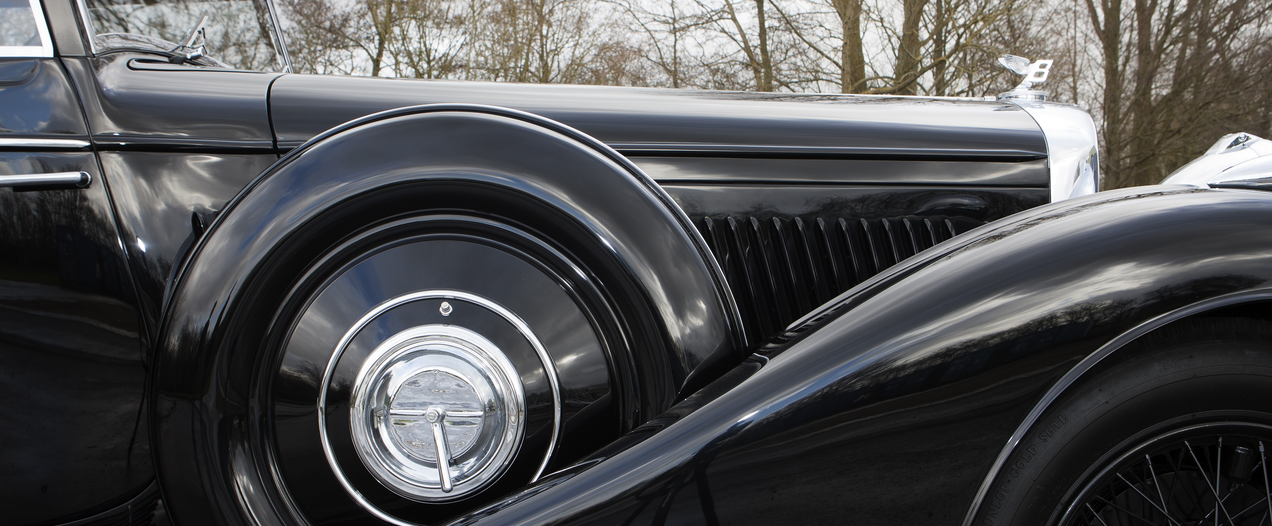
Chassis Series
The Rolls-Royce philosophy regarding chassis numbers was that every chassis should have a unique number by which it was to be known. Today this would be called a VIN (Vehicle Identification Number). Extremely detailed records were kept of every car that was produced, which doubtless allowed for almost total traceability of at least the sub-assemblies that went to make up the car. This was a major factor in the quality control and level of service offered by the factory.
Chassis Numbers were grouped into Series. As mentioned elsewhere Rolls-Royce used the Chassis Series extensively to define which parts were appropriate for a given chassis.
The relationship between Chassis Number & Chassis Series
Beginning with the Silver Ghost production in 1907 a chassis was given a number that was solely numeric. These were issued in blocks of consecutive numbers. In the course of 1909 chassis numbers were created in a continuous sequence, running from 1100 to 2699 in mid-1913. At this time an alpha-numeric numbering system was introduced. The alphabetic part of a number would remain unchanged for a block of chassis, with the numeric part of the chassis number increasing sequentially. For example, in 1920, eighty Silver Ghost chassis had numbers ranging from 1TW to 81TW. In 1930 two hundred Phantom 2s had numbers from 1GN to 202GN.
With the introduction in 1913 of the new numbering sequence Rolls-Royce also introduced the concept of Chassis Series. Prior to this point the numbering sequence had been grouped, but not assigned a Series label. The Series was always denoted by a letter, and these were issued in strict alphabetic order, but omitting the letters I and Q. It was not until part way through the production of the Twenty horsepower in 1928 that an element of the alphabetic part of the chassis number was related to the Series. However this was not extended to the Phantoms until 1933, when the P2 series chassis incorporated the letters PY in the chassis number. After passing the letter Z the Series sequence would begin again at A2, B2 etc. Some series were divided in to two; the 20/25 production has a TA series followed by TB.
Until the relationship between the Series and Chassis Number was established the alphabetic part of the Chassis number appears to have been chosen at random. It probably was not, but the system that was employed is a mystery. After this point the part of the Chassis Number that was not related to the Series continued to be chosen at random. Referring to the 20/25 production, for example, the alphabetic part of the Chassis Number consists of three letters. The first is always G, followed by a random letter, followed by a letter defining the Series:
Chassis in series Z are GLZ1-81, GTZ1-81 and GHZ1-41.
Chassis in series A2 are GBA1-81, GGA1-81 and GHA1-41
Chassis in series B2 are GXB1-81, GUB1-81 and GLB1-41.
Rules always have their exceptions. The first cars to be included in the OA series of 20hp had chassis numbers GEN42-82, at which point the sequence restarted at GVO1. The U series of the 20/25 chassis ended with GMU21; the sequence continued in the V series which contained chassis GMU22-81 and GZU1-41. There were no 20/25 chassis with the third letter V.
A further variation was introduced with the Derby Bentley and Phantom 3. Alternate alphabetic groupings of chassis numbers used either all odd numbers (omitting 13) or all even. This did allow for a little in-filling, and if an earlier chassis was subsequently re-numbered with a later number it might be dropped in to a gap in an all-even or all-odd sequence. Curiously this variation was not applied to the Wraith, the last model to be produced pre-war (excluding the Bentley Mark V, which was still a Derby Bentley).
Enter your chassis number in Chassis Finder to find the chassis series of your car.
Early Silver Ghosts and Springfield-built cars were not assigned Chassis Series as such. We have taken the liberty of creating a Chassis Series for these cars to help list and describe them.